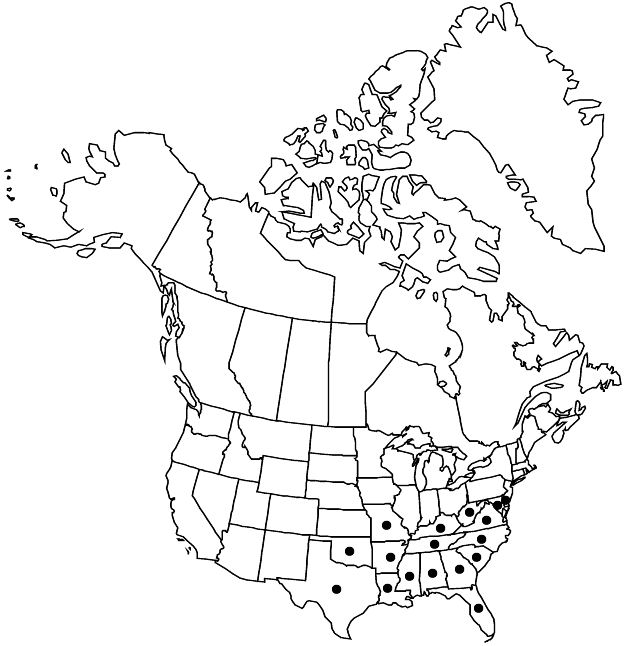Vitis rotundifolia
Fl. Bor.-Amer. 2: 231. 1803.
Plants usually high climbing or sprawling, sometimes shrubby, usually sparsely branched. Branches: branchlets terete to slightly angled, usually sparsely grayish arachnoid, glabrescent, growing tips not enveloped by unfolding leaves; tendrils along length of branchlets, persistent, tendrils (or inflorescences) at only 2 consecutive nodes; nodes sometimes red-banded. Leaves: stipules 1–2 mm; petiole mostly ± equaling blade; blade cordate to nearly reniform, 2–12 cm, rarely lobed, apex short acuminate, abaxial surface not glaucous, glabrous, visible through hairs, veins and vein-axils sometimes sparsely to densely hirtellous, adaxial surface glabrous. Inflorescences 3–8 (–10) cm. Flowers functionally unisexual. Berries usually black or purplish, sometimes bronze when ripe, glaucous, globose, 8–25 mm diam., skin separating from pulp; lenticels present.
Distribution

Ala., Ark., Del., Fla., Ga., Ky., La., Md., Miss., Mo., N.C., Okla., S.C., Tenn., Tex., Va., W.Va.
Discussion
Varieties 2 (2 in the flora).
Selected References
None.
Key
| 1 | Berries 15–25 mm diam., usually 2–8 per infructescence; seeds 9+ mm. | Vitis rotundifolia var. rotundifolia |
| 1 | Berries 8–12 mm diam., 12–30 per infructescence; seeds to 6 mm. | Vitis rotundifolia var. munsoniana |
"connate" is not a number.